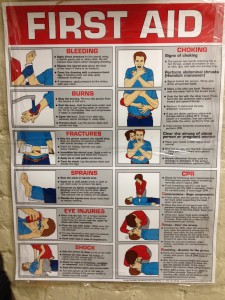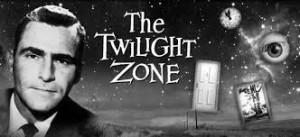From Charlie Kaufman’s highly recommended 2011 BAFTA lecture: ‘People all over the world spend countless hours of their lives every week being fed entertainment in the form of movies, TV shows, newspapers, YouTube videos and the internet. And it’s ludicrous to believe that this stuff doesn’t alter our brains. It’s also equally ludicrous to believe that – at the very least – this mass distraction and manipulation is not convenient for the people who are in charge. People are starving. They may not know it because they’re being fed mass produced garbage. The packaging is colorful and loud, but it’s produced in the same factories that make Pop Tarts and iPads, by people sitting around thinking, ‘What can we do to get people to buy more of these?’
Tag: television
 It is now time for my complete list of The Suck In Today’s Film Biz. Earlier this week, I’ve dropped some bits on Keyframe and Filmmaker Mag. IndieWire picked it up. There’s so much that is wrong, it is easy to share the wealth. But here is all of those combined lists plus many more. Can’t you hear everyone screaming “OMG, there is so much too fix! It is time we made this really work for ambitious and diverse film once and for all!”? We wish, right?
It is now time for my complete list of The Suck In Today’s Film Biz. Earlier this week, I’ve dropped some bits on Keyframe and Filmmaker Mag. IndieWire picked it up. There’s so much that is wrong, it is easy to share the wealth. But here is all of those combined lists plus many more. Can’t you hear everyone screaming “OMG, there is so much too fix! It is time we made this really work for ambitious and diverse film once and for all!”? We wish, right?
I have been chronicling the negative in our film industry for sometime now — six years in these type of posts, but my original rant goes back to 1995 for Filmmaker Magazine. Much of what I have stated in years’ passed remains still in need of getting done. Dig in to my past lists and when you combine them you will have well over 100 things that we could be doing better. You’d think with so much wrong, more people would stand up and say “this has got to change!”. Where is the film industry’s national leadership? For the first time I believe we are capable of conceptualizing what an entire systems reboot could be — and one that looks out for ALL the stakeholders. Isn’t it time for a international summit on this?
I have been also chronicling the good too, but today that’s for another day. Come back tomorrow for my comprehensive list of 30 Good Things In The Film Biz 2014.
By detailing what we have failed to do, done wrong, or continue to ignore, we build a road map of how we can improve things for the future. Here’s my contribution to that map for 2014. Let’s build this better together.
- The “Winners Take All” Blockbuster Model Has Stomped “The Long Tail” Flat (in Hollywood). And as much as I hoped people would try to resist
 A few weeks ago HBO and then CBS announced that they would launch stand-alone online services in U.S. in 2015. Before that, Netflix had made known that it would start producing features, crushing theatrical release windows once and for all, after it had contributed to the change of the patterns of attention and the way TV series are made by releasing its House of Cards episodes all at once, as a 13-hour movie. ‘Now the real shakeout begins’, wrote Ted Hope in Hollywood Reporter. ‘We are witnessing the march from once lucrative legacy practices built around titles to a new focus on community.’ Michael Wolff, writing also in the Hollywood Reporter, disagrees: ‘Streaming services from the two networks don’t signal television’s capitulation to Netflix and the web; it’s actually the opposite, as the medium expands yet again to gobble up more revenue.’ And in that sense, he says, it will hurt Netflix and all other digital competitors.
A few weeks ago HBO and then CBS announced that they would launch stand-alone online services in U.S. in 2015. Before that, Netflix had made known that it would start producing features, crushing theatrical release windows once and for all, after it had contributed to the change of the patterns of attention and the way TV series are made by releasing its House of Cards episodes all at once, as a 13-hour movie. ‘Now the real shakeout begins’, wrote Ted Hope in Hollywood Reporter. ‘We are witnessing the march from once lucrative legacy practices built around titles to a new focus on community.’ Michael Wolff, writing also in the Hollywood Reporter, disagrees: ‘Streaming services from the two networks don’t signal television’s capitulation to Netflix and the web; it’s actually the opposite, as the medium expands yet again to gobble up more revenue.’ And in that sense, he says, it will hurt Netflix and all other digital competitors.
Television’s impressive artistic and commercial success is not a solely American phenomenon – it is not even an English language phenomenon. The case of the Danish series Borgen (2010-2013) is exemplary. Borgen brought together on average a 50% share in its home market and was shown all over the world to great acclaim. Much like The West Wing, it worked as a reminder that sincere idealism can still be part of politics, while at the same time giving a pretty nuanced idea of how politics work. Danish TV drama (shows like The Killing/Forbrydelsen of 2007-2012, The Bridge/Bron from 2010-2013, and most recently The Legacy/Arvingerne and soon-to-be-released 1864) began its revival about fifteen years ago – at the same time as its domestic film industry, and with the fiction department of the public channel DR as its driving force.
In the words of playwright Theresa Rebeck (from a talk she gave in 2010, reprinted in Women & Hollywood) : ‘It’s time to hear both sides, to hear all voices, to build a culture where stories are told by both men and women. That is the way the planet is going to survive, and it’s the way we are going to survive.’ So, how can we build that culture? Where do we start? I will list a few options to start with, and I’m inviting you to suggest more:
American TV is written for the most part by (white) men. The same applies to American movies, as well as European movies and European TV. Is it then a surprise that male characters outnumber females at least 3 to 1, even though females comprise over 50% of the population? Even more staggering is the fact that this ratio remains the same since 1946! According to Stacy Smith of the USC Annenberg School for Communication & Journalism, 80.5% of all working characters are male and 19.5% are female – in contrast, of course, to real world statistics, where women comprise 50% of the workforce.



